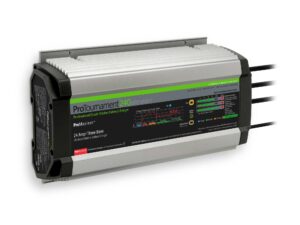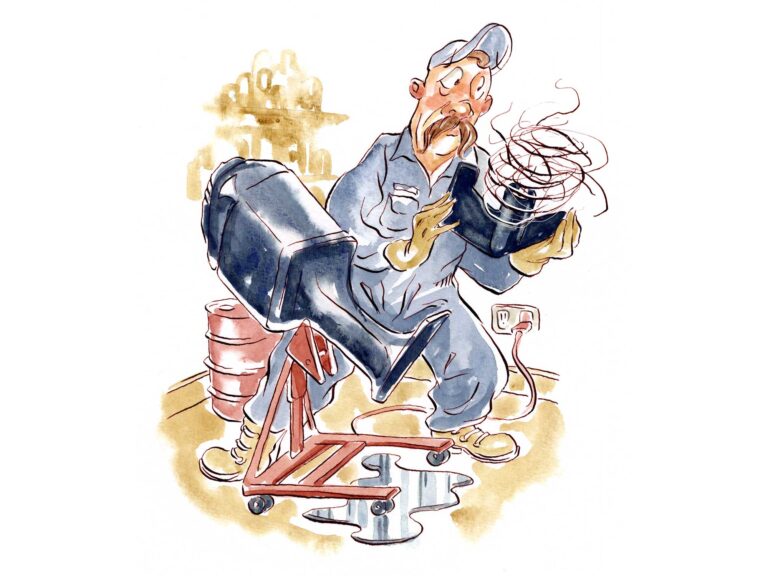Installing marine electronics can often be a challenge, particularly when it comes to places to mount displays, routing cables and wires, and to secure electronic connections. Here is some advice from professional marine electronics installers to help simplify your next electronics DIY project.
Running Cables
Passing a cable with a factory-assembled connector through a bulkhead can pose a problem. Blue Sea Systems’ Cable Clams (bluesea.com), Newmar’s CCXX and RA (newmarpower.com), and ScanStrut’s Deck Seal series (scanstrut.com) pass-throughs let you run a cable with a connector of up to 1½ inches in diameter through a deck or bulkhead. Once installed, these provide a waterproof seal around the exposed cable.
Digital Antenna (digitalantenna.com) uses a pre-assembled connector for its radio antennas with a removable outer shell. This reduces the size of the connector core and allows it to pass through a cable-size opening, enabling you to drill a smaller-diameter hole. The connector is then easily reassembled; no soldering required.
It’s a good idea to invest in an electrician’s snake for running cables through rigging tubes. When running cables or wire, first push the metal snake through the tube, and then securely tape on the cable or wire, plus an additional “pull wire” for future projects, and then pull the snake back out to run the wires through.
Because of its flexibility, a stainless-steel tachometer cable or a discarded throttle or shift cable also serves as an excellent tool to fish a stubborn cable through narrow tubing or other restricted wire ways. Keep in mind you can also use the cables from old equipment as handy pull wires in limited-access areas. Tape the new cable to an old wire (plus a second pull wire for future projects); while the old wire is being removed, the new wiring is pulled through into place.
When making runs through a tight or crowded wire way, stanchion or radar arch, try dousing the cables or wires with baby powder. It works wonders in helping them slide through confined passages. And baby powder cleans up fairly easily (smells good too). Whenever fishing cables and wires through stanchions and tubes, if possible start at the highest point and feed it downward, so gravity works for you instead of against you.
Connecting Wires and Cables
Size matters when running power cables. The Blue Sea Systems Circuit Wizard (visit boatingmag.com/circuitwizard for our review and links to a free download) determines the proper-size wire to use for the current rating of the equipment and the length of the cable needed.
Avoid “octopus” connections by connecting no more than four wires (ABYC Standard E-11) to any single terminal point. Some installers set a maximum of three wires, which is even safer. Additional wire terminal blocks can be used to spread out the wiring connections. Small electrical subpanels can be installed when connections to a main breaker panel become overloaded.
Keep connections high and dry by use of waterproof junction boxes from companies such as Newmar or ScanStrut. You can help protect exposed connections in damp areas by spraying them with a water-repellent chemical like CRC Industries No. 06026 Heavy Duty Corrosion Inhibitor, which deposits a protective film. MDR 740 Lectric Liquid Tape can be applied to exposed connections.
Use the proper crimping tool when installing terminal lugs on wires. Pliers are not a suitable substitute; using them frequently results in high-resistance connections. And do not use “barrel splice” crimps on connectors to connect power leads. A terminal block is best suited for this purpose. Never, ever use a plastic home-style twist-on connector to join bare wires. Connections of this type should be soldered and protected with heat-shrink tubing if a terminal strip is not practical.
Quick Tip: One trick riggers use to feed a pull cord through an open tube is to fray and puff up the leading end of the cord and then use a shop vac to suck the pull cord through the tube.







